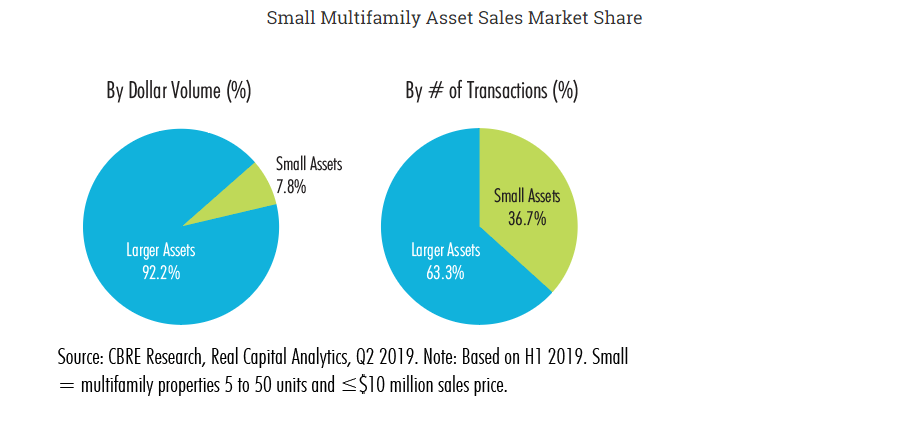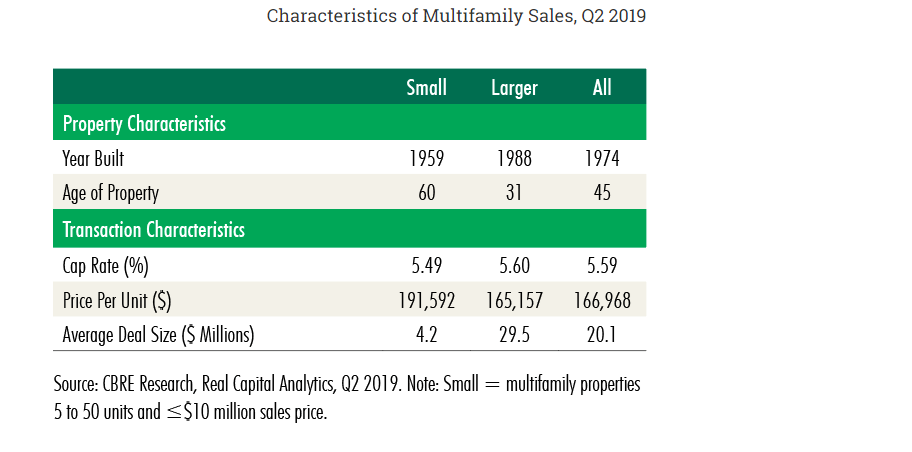A high amount of available capital is giving buyers the upper hand in the financing game, particularly in the case of middle-sized acquisitions. As the cycle reaches its last innings, however, it will take more effort and finesse to stay on top of things.
By: Alexandra Pacurar
Going into 2019, many investors expressed more caution, with fewer planning to increase their purchasing activity. The hesitation was mostly due to trade tensions and interest rate volatility and not because of capital constraints. In fact, the amount of liquidity and diversity of debt providers has kept 2019 transaction volumes on par with what we’ve seen last year.
So why did debt offerings multiply over the past couple of years? It seems it was all about implementing business strategies for diversification and efficiency in the face of an economic slowdown, as companies providing large loans “decided to do more mid-range loans to diversify and make their portfolios more granular,” said Michael Riccio, CBRE senior managing director of debt and structured finance, capital markets, while smaller lenders “wanted to ‘upsize’ their average loan size to be more efficient from a staffing and workload perspective.”
WHAT’S ON THE MENU?
Gerard Sansosti, executive managing director of JLL Capital Markets, believes that financing is trickiest in tertiary markets. Image courtesy of JLL
Multifamily and industrial remain the easiest to finance. The former dominates from a transactions volume standpoint, while the latter is most attractive. “Most investors want to increase their industrial/distribution allocations, as that sector is the most desirable based on our surveys,” Riccio added. Properties in these segments have also seen higher increases in valuations compared to other asset types, which has led to more interest from both short-term and long-term investors.
Despite increased competition, lenders have not lowered their standards just to close a deal. Borrowers still need to make sure that they meet “the right combination of property quality, market liquidity and sponsor experience,” said Ranajoy Sarkar, chief product officer at Roc Capital. However, some debt providers have shown more flexibility and created borrower-friendly products to score the right transactions.
“In addition to low rates, bridge lenders are offering concessions to borrowers on a number of fronts, the most common being reduced fees and easier prepayment options. Other borrower-friendly structures, such as 5-year ‘mini-perm’ loans with rate step-downs or longer bridge loan terms (3+1+1 years), are also becoming more commonplace,” he added.
Technology and data have pushed investment to a level that has made financing acquisitions easier by scooping safer bets. This means that borrowers have more resources when putting together a business plan that includes obtaining an acquisition loan.
“We are focusing on new data sets to unearth opportunities in uncrowded markets where we can make direct investments that expand our portfolio to include a diverse range of investments,” Fred Scott, principal at investment and asset management firm Advalurem Group, told CPE.

RETURN OF THE CLOS
When it comes to capital sources, the spectrum of offerings hasn’t changed in recent years, but the market share of each financing product type has definitely shifted. “Nothing really new this year, other than more lenders and investors in this debt fund space. As everyone knows, the debt fund space has become overcrowded and this has caused easing of loan covenants. CMBS has also become a competitive option as on-book lenders have instituted interest rate floors,” said Riccio.
Debt funds have also been powered by a significant amount of capital from South Korea, China and Japan, which “added to the overall liquidity of the sector through a combination of factors, including lower borrowing costs, higher leverage and expanded credit criteria,” Sarkar said.
The offering is complemented by insurance companies, balance sheet and CLO bridge lenders, as well as local and regional banks. In fact, commercial real estate CLOs are on track for a post-crisis record year for issuances.
“As yield compression continues in domestic fixed-income asset spreads, the effect has been magnified in mortgage and structured credit sectors, where the investable universe is a fraction of its size at the peak of the previous cycle. This has led to new institutional capital entering the market for CRE CLO debt backed by mid-balance bridge loans and has driven all-in term debt costs to under 1.5 percent over one-month LIBOR for some CRE CLO issuers,” explained Sarkar. If the trend continues, the lending environment will remain favorable to borrowers.

BUMPS IN THE ROAD
Although more competitive and aggressive now than ever before in this cycle, lenders still keep in mind the effects of the last downturn. “Lenders are avoiding certain subsectors and submarkets with various reasons being cited. While it’s early, we’re monitoring these market and sector gaps for potential investment opportunities,” said Scott.
The location and strength of a particular market—broadly defined as primary, secondary or tertiary—are limiting some lenders’ activity. The specific type or property and the nature of the borrower’s business plan are other factors that determine the complexity and the success of the lending process for short- or medium-term bridge debt for transitional properties. Balancing these variables with the borrower’s expectations is another challenge.
“What makes this even more challenging is the speed of execution borrowers require and expect in a competitive market. Full-cycle timelines for underwriting and closing a deal in the mid-balance market can be as short as four weeks and typically in the six- to eight-week range for loans on the higher end of the spectrum,” said Sarkar.
For borrowers, it’s important to “know thy lender,” as Gary Bechtel, president of mid-balance CRE lender Money 360, put it, and work with one “that truly has the ability to close the loan, which is highly critical in purchase transactions with generally short fuses, or that will be there in the future for draws for rehabilitation or tenant improvements on properties not yet stabilized.”

WHAT TO EXPECT FROM 2020
Investment plans are built by looking at the bigger picture, which means that political factors also weigh in heavily. With 2020 being an election year, “most lenders are ‘cautiously optimistic,’” Shahin Yazdi, principal at George Smith Partners, mentioned.
Looking forward, market researchers unanimously name the U.S.-China trade war as a potential major disruptor in the medium and long term, albeit the impact so far has been minimal. The second threat would be the economic slowdown.
“The rising uncertainty has crept into the labor market as employment gains since midyear 2019 have decelerated from their average pace over the last 12 months. Additionally, even the strongest facet of the U.S. economy, the consumer, is losing confidence, and sentiment is slowly eroding,” CBRE Global Investors’ Americas Watch for October shows.
While the amount of available capital is not expected to shrink next year, the number of transactions is anticipated to decrease. “The market for mid-size debt is arguably less deep and liquid relative to its larger counterpart, which further increases the risk of a market dislocation. Borrowers should be mindful of the prospect of a freeze in funding markets when seeking debt for mid-size acquisitions in 2020,” Sarkar concluded.
Top executives are generally confident that the market will continue on the current path, with “an excellent supply of capital at very competitive rates,” as Bechtel said, through 2022. At the same time, George Smith Partners’ Yazdi believes that even more lenders will enter the industry and that spreads will stabilize as rates continue to drop.
Original Publication: www.cpexecutive.com or digital magazine.
